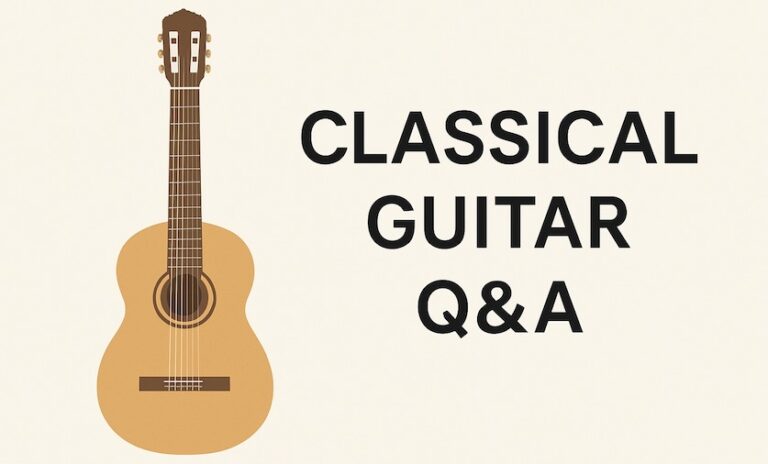This is from my book Classical Guitar Technique: Essential Exercises, Scales, and Arpeggios. The 122 page book includes: Practice Routines, Tips, 100 Open String Exercises, 120 Giuliani Arpeggios, Scales, Slur Exercises, Shifts, Finger Independence, Barre, Tremolo, Common Harmonics, and much more. Here’s the Youtube Lesson Link if you want to watch it there.
The ways I discuss are: Destination Points; Groups of Two and Three; Rhythmic Variation; Articulations, Dynamics, Timbre; Tremolando Scales.
The ideas should be applied to all your scales and exercises. Each variation or idea will increase the difficulty of some aspect of the scale and should expose weaknesses in your technique that need to be addressed. Practice with all right hand fingerings: i-m / m-a / i-a / a-m-i, and use rest stroke and free stroke. Some examples are notated ascending only but continue the pattern descending as well.
Keep in mind that you can apply the same concepts to passages in your repertoire. It’s not a scale specific lesson just because I’m using a scale to demonstrate. Any passage of music can be worked and reworked for technique purposes.




Thank you for your quick response! The entire index finger stretches out straight. This also happens when playing certain arpeggios where I’m playing m-a without using i for a while (or at all) like in Carulli prelude 5 from op. 14. I have to really concentrate on keeping it curved and to do so I have to play very slowly and even then it’s hard to keep it from straightening out.
I’m thinking it may be a bad habit I developed after not having taken lessons for many years. I was hoping you might have seen something like this. I want take lessons again but I’m not sure how to find a teacher who can correct things I’ve been doing wrong and the pandemic is not the best time for in person lessons.
I practice my scales slowly and increase speed on the metronome with each repetition. When I practice m-a, I notice that as I increase the speed my index finger wants to straighten so that it’s pointing downward instead of staying curled. Is this ok? It doesn’t look right to me and it’s been bothering me but I can’t stop it as I increase speed. My top speed is currently 100 bpm for eighth note triplets. Do I need to do something to try to keep the i finger curled?
Also, I find that in all of my scale right hand finger combinations and speeds I use the side of my thumb to dampen strings so that the notes/strings don’t keep ringing out or vibrate sympathetically as I go up and down the scale. So the thumb isn’t resting on a string, it’s floating. Is that ok?
Thanks very much for the videos and your technique book. Happy New Year!
You shouldn’t be changing your technique at higher speeds very much. If you are you might be tensing up a bit too much. Is your entire index stretching out or just the tip joint?
It’s ok to let notes ring or mute them depending on what you are playing. In the end we want to able to do both.